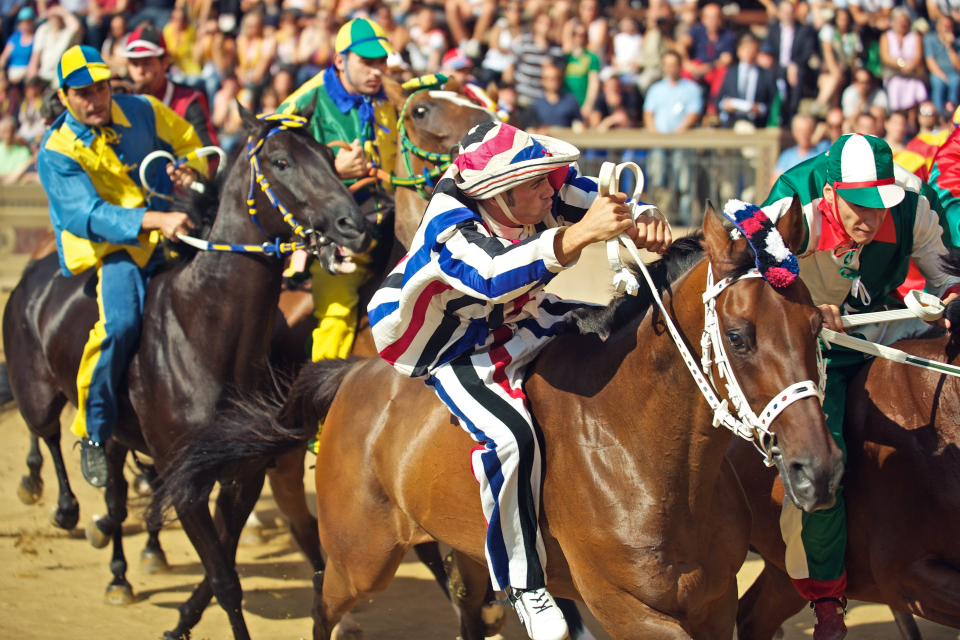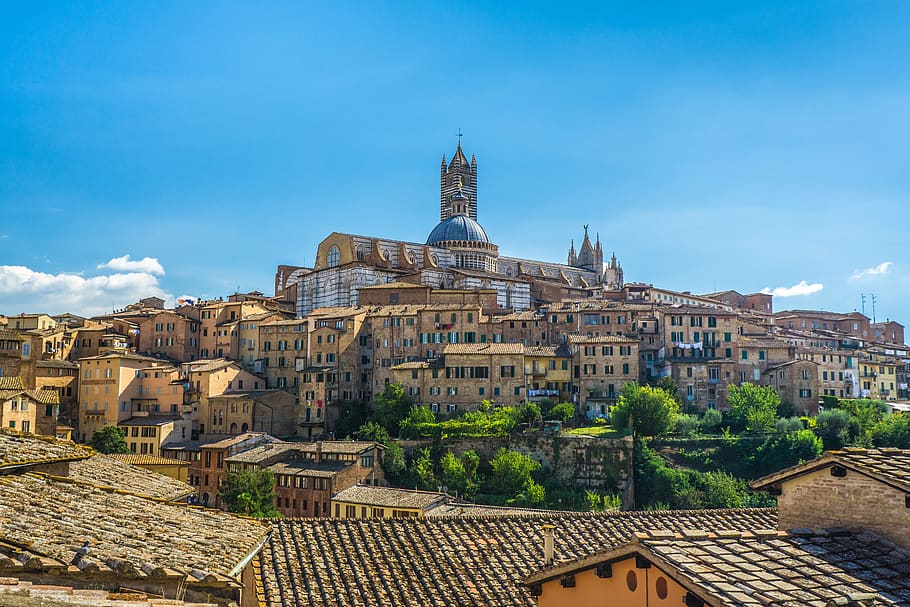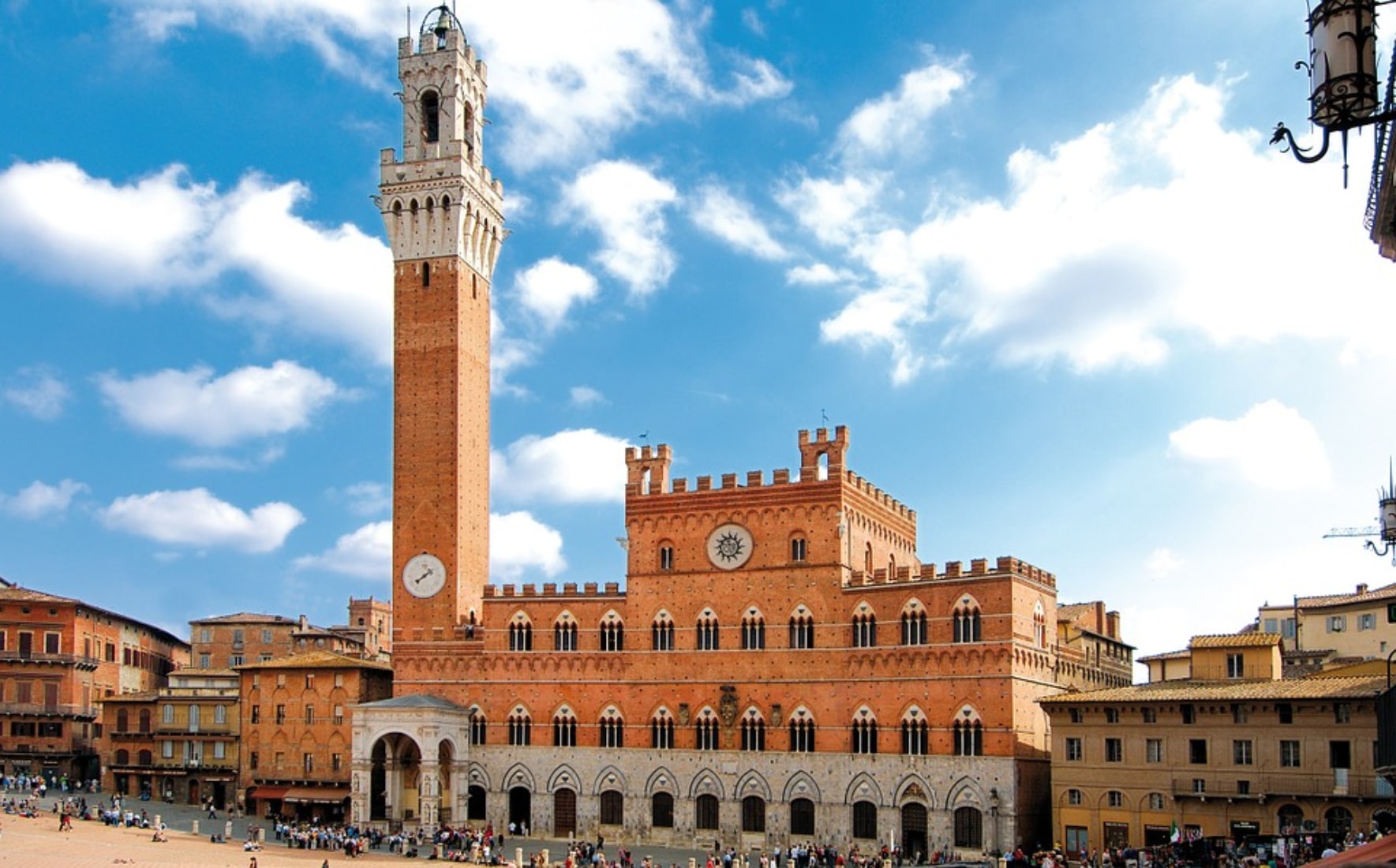Il Palio: the origins
In the Campo of Siena
Il Palio di Siena is the ritual of a city and the historical memory of a civilisation, whose history and tradition it evokes twice a year (2 July and 16 August).
Siena was an Etruscan city well connected to the major centres of Etruria and some have pointed out fascinating analogies of the early Palios with the equestrian games of the Greeks and later the Etruscans.
Among the events that most commonly accompanied celebrations in the Middle Ages in honour of patron saints, or crowned those held on joyous occasions, were horse races, either jockey-mounted or shaken.
The prize for the winner was a gonfalon of precious cloth, which was designated by the Latin name 'pallium', and from the name of this presumably began to be referred to as the Palio races.
Il Palio as a festival was not an exclusively Sienese event. Consider, in fact, with due differences, the Florentine calcio storico, the Pisan giuoco del ponte, the giostra del Saracino in Arezzo, just to remain in Tuscany. Il Palio was also run in other places, but only in Siena has it survived through the turbulent events of the city's history and indeed it has come to acquire an even more solemn and sumptuous form, until in recent years it has become the most vivid expression of the city's soul.
At the beginning, the Palio was closely linked to a ceremony in which the sovereignty of Siena was affirmed. It was not a celebration in itself, but concluded a very important political-religious event for the municipality. On the eve and feast day of the Assumption, the municipality and citizens brought candles and censuses to the cathedral as a sign of subjection to the bishop.
Il Palio we are talking about here was run "alla lunga" i.e. in a line on a route that went from outside the walls to the Cathedral, from the meadows of the Contado, through tufa-covered, muddy and bumpy roads like Pantaneto, to the sacred marbles of the Cathedral. And to run it, on 15 August, were the nobles and notables on their horses. Il Palio"alla tonda" in July, on the other hand, did not begin until the 17th century.
As early as 1546, we find all seventeen of today's Contrade with today's symbols, but with different colours (find out more about the Contrade here).
The idea of running Il Palio in the Piazza was officially presented in 1605 for several reasons, including the danger of the previously chosen streets and the impossibility of fully enjoying the spectacle. Instead, the greatest advantage of holding Il Palio in the Piazza was the possibility of watching the entire race from the same seat. From 1656 Il Palio alla tonda became the definitive choice on a regular basis.
During the first Palii alla tonda, the horses were selected by choosing as homogeneous lot as possible and excluding, at the end of the selections, the first and the last to arrive. Although the Contrade in the past procured their own horses independently, in order to offer an equal chance of victory to all, from 1676 onwards, they relied on a draw that assigned each horse in the lot to the competing Contrade.
In those years, the order in which the horse was assigned also corresponded to the order in which the extras entered the Piazza in the cortege before the race, as did the order of alignment for the Palio move.
At the end of the 17th century and the beginning of the 18th century, it was decreed that a shaken horse, i.e. one without a jockey, could also win Il Palio. E il barbero che vince 'scosso' ('shaken') is still for the Sienese the most beautiful sign of the favour of fate and joy!
Discover Chianti with its castles...
The myth of Siena
The myth of Siena The creation of the myth of Siena and the PalioThe common image we have of Siena is that of a precious Gothic casket, coherent and organic, characterized by the typical brick facades, ogival arches and paintings with a gold background. The creation...
The constitution of the city
The constitution of the city Between myth and truthThe best known myth about the origins of Siena dates back to Roman times when, according to legend, the young Senio, son of Remo, together with his brother Ascanio, settled here and founded a castle to escape the...



